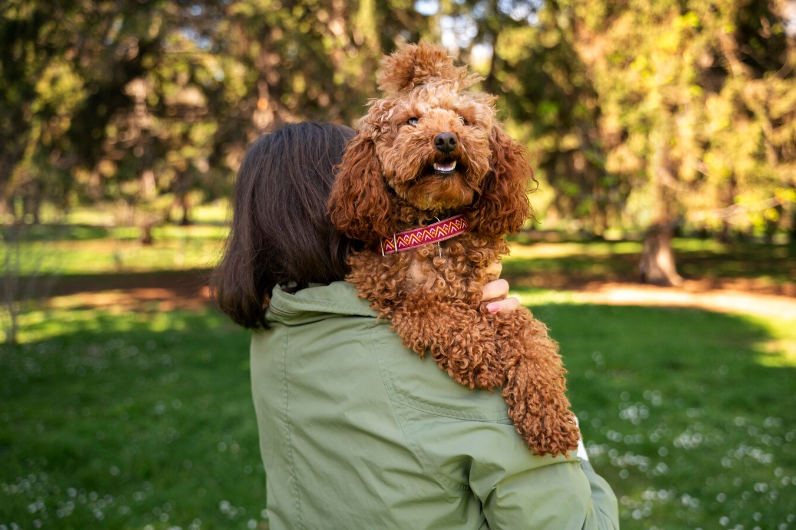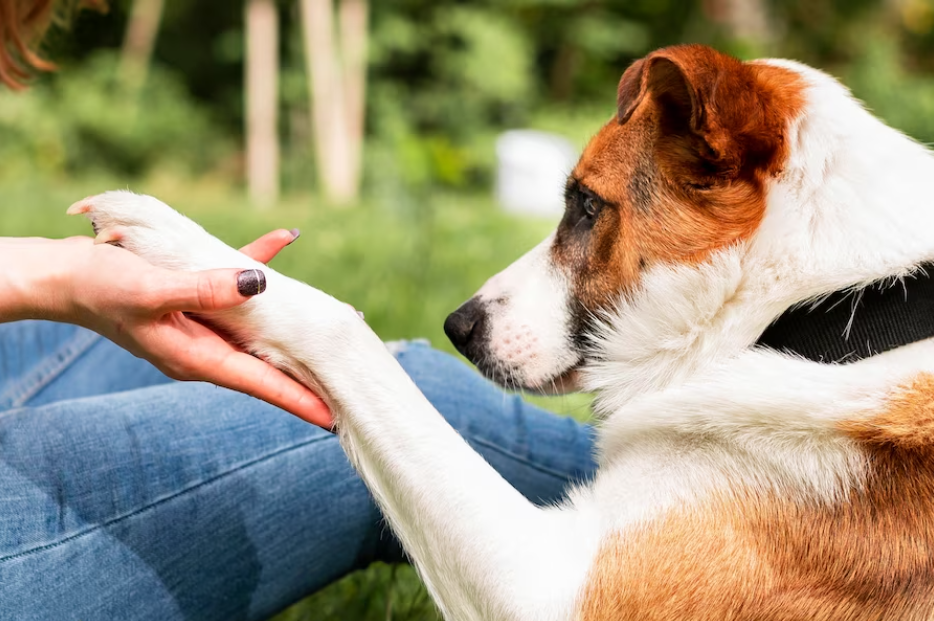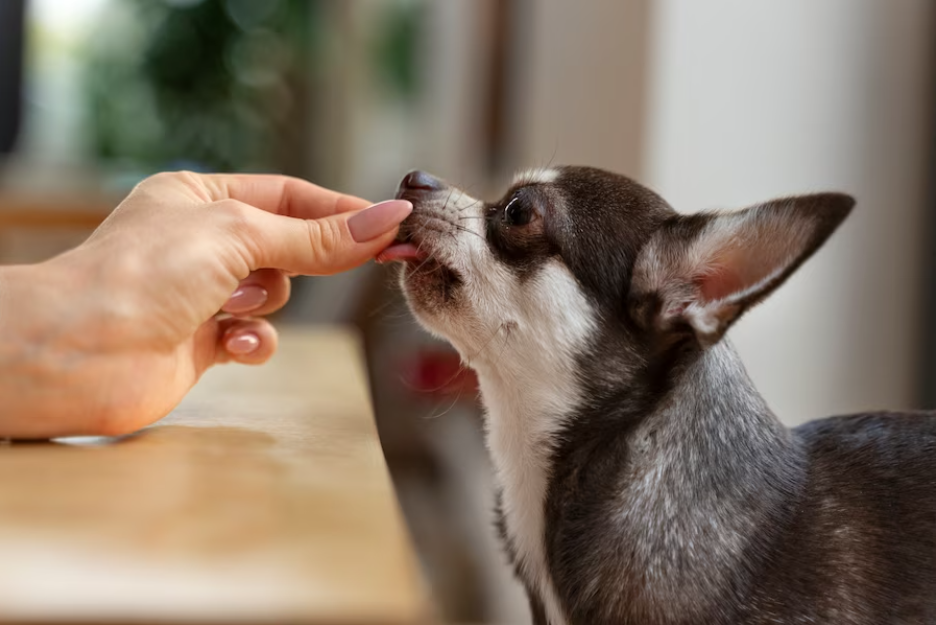Big Poodle Dog – Exploring the World of Large Poodles

When you think of poodles, the first image that probably comes to mind is a small, curly-haired dog with a fancy haircut. However, did you know that there is a world of big poodles out there? These larger versions of the beloved poodle breed are just as amazing and deserve some recognition.
Big poodles, also known as standard poodles, are not only larger in size, but they also have an impressive presence. With their sturdy build and elegant appearance, they are hard to miss. These dogs are a true testament to the versatility of the poodle breed.
Exploring the world of big poodles is like discovering a hidden treasure. These dogs are not only beautiful, but they are also incredibly intelligent and trainable. From competing in dog shows to working as therapy dogs, big poodles excel in a variety of roles.
It’s not just their size that sets big poodles apart, but also their personality. They are known for being loyal, playful, and affectionate. Whether you’re looking for a running partner or a cuddle buddy, a big poodle can be the perfect companion.
So, if you’ve never considered a big poodle before, it’s time to take a closer look at this amazing breed. Whether you’re captivated by their majestic appearance or intrigued by their intelligence, big poodles have something to offer for everyone. Get ready to embark on a journey through the world of big poodles and discover the many wonders they have to offer.
Origin and History of Large Poodles
The large poodle, also known as the standard poodle, is a breed of dog that has gained popularity all over the world. These big, intelligent, and elegant dogs are not only loved for their size but also for their versatile abilities.
Origins
The origins of large poodles can be traced back to Germany, where they were initially bred as water retrievers. Their name “poodle” comes from the German word “pudel,” which means “to splash” or “to paddle.” Large poodles were specifically bred to be larger in size compared to their smaller counterparts, the miniature and toy poodles, to assist hunters in retrieving game from the water.
Large poodles quickly gained popularity both in Germany and other European countries due to their excellent retrieving skills, intelligence, and trainability. They were even recognized as official water retrievers for the Prince of Orange in the 16th century.
Historical Role
Large poodles have played various roles throughout history. Apart from being exceptional hunting dogs, they also served as circus performers, truffle hunters, therapy dogs, and even wartime messengers during World War II.
Due to their intelligence and ease of training, large poodles were often used in circus acts, showcasing their agility and obedience. They could perform impressive tricks and entertain audiences with their charm and elegance.
Another interesting historical role that large poodles played was as truffle hunters. Their keen sense of smell and ability to cover ground quickly made them valuable assets in searching for these highly prized mushrooms. Truffle hunters would rely on their large poodles to sniff out the location of the truffles underground.
During World War II, large poodles were used as wartime messengers due to their agility and ability to navigate difficult terrains. Their intelligence and loyalty made them ideal for carrying messages between troops, providing critical communication in challenging situations.
Today, large poodles are mainly kept as companion dogs and are popular in various dog sports, such as obedience, agility, and tracking. They continue to be cherished for their intelligence, versatility, and loving nature.
Characteristics of Big Poodle Dogs
When exploring the world of poodles, it’s impossible to miss the big and majestic presence of the large poodles. These impressive dogs are known for their size and grace, making them stand out among other breeds.
One of the most noticeable characteristics of big poodle dogs is their size. These dogs can grow up to be quite large, with males often reaching heights of 25-28 inches and females ranging from 22-24 inches. Their size makes them an imposing presence and gives them a commanding presence wherever they go.
In addition to their size, big poodle dogs also have a distinctive appearance. They have a distinctive curly coat that is dense and can be either a solid color or a combination of colors. This curly coat not only gives them a unique look but also serves as a protective barrier against the elements.
Despite their large size, big poodle dogs are known for their agility and athleticism. They are highly active and love to play and run, making them excellent companions for those who enjoy outdoor activities. Their intelligence and trainability also make them great candidates for various dog sports and competitions.
Big poodle dogs are also known for their friendly and gentle nature. They are loving and loyal companions, and they get along well with both humans and other animals. Their calm and patient temperament makes them ideal for families with children, as they are excellent with kids.
In conclusion, the characteristics of big poodle dogs make them a remarkable breed to explore in the world of poodles. From their size and distinctive appearance to their agility and friendly nature, these dogs have a lot to offer. Whether as a loving companion or a competitor in various dog sports, big poodle dogs are sure to leave a lasting impression.
| Characteristics | Details |
|---|---|
| Size | Up to 25-28 inches for males, 22-24 inches for females |
| Appearance | Distinctive curly coat, solid or combination of colors |
| Activity Level | Highly active and athletic |
| Temperament | Friendly, gentle, and loyal |
Different Varieties of Large Poodles
When it comes to the world of poodles, there is a diverse range of sizes, and large poodles are one of the most majestic and impressive varieties. These dogs are not only known for their size, but also for their intelligence, loyalty, and friendly nature.
Standard Poodles
The standard poodle is the largest variety of poodle. They can weigh anywhere from 45 to 70 pounds and stand at a height of 15 to 24 inches at the shoulder. These dogs have a sturdy and well-proportioned body, making them excellent companions for various activities, including hiking and swimming.
Not only are they physically impressive, but standard poodles are also highly intelligent. They are often used as working dogs, participating in activities such as search and rescue, therapy work, and even competitive obedience and agility trials. This breed’s versatility and adaptability make them a favorite among dog owners and trainers worldwide.
Giant Poodles
Another variety of large poodles is the giant poodle. As the name suggests, these dogs are even bigger than standard poodles. They can weigh anywhere from 60 to 100 pounds and stand at a height of 18 to 27 inches at the shoulder.
Giant poodles have a strong and athletic build, allowing them to excel in activities such as agility, tracking, and even protection work. Despite their size, they are known for their gentle and loving nature, making them excellent family pets.
It’s important to note that large poodles, like any other dog, require proper training, socialization, and exercise to ensure they are well-behaved and happy. Regular grooming is also essential to maintain their beautiful curly coats.
Conclusion:
Exploring the world of large poodles is an exciting journey filled with beauty, intelligence, and companionship. Whether it’s the standard poodle or the giant poodle, these dogs capture the hearts of dog enthusiasts around the globe with their charm and unique qualities.
Care and Maintenance of Big Poodle Dogs
Poodles are known for their intelligence, elegance, and charm. They come in various sizes, including the big and large poodle breeds. If you are exploring the world of big poodles, it is important to understand their specific care and maintenance needs.
Grooming: Big poodles have curly, dense coats that require regular grooming. Brushing their fur daily will help prevent matting and keep their coat healthy and shiny. It is also essential to schedule regular professional grooming appointments to trim their hair and nails.
Exercise: Big poodles are active dogs that require regular exercise to keep them happy and healthy. Taking them for daily walks or runs, playing fetch, or engaging in other physical activities will help burn off their energy and prevent them from becoming bored or destructive.
Training: Poodles are highly intelligent and eager to please, making them easy to train. Big poodles benefit from early socialization and obedience training to ensure they grow up to be well-behaved and well-mannered dogs. Positive reinforcement methods, such as treats and praise, work best with poodles.
Diet: Providing a balanced and nutritious diet is crucial for the overall health and wellbeing of big poodles. Consult with a veterinarian to determine the appropriate type and amount of food for your poodle. Avoid feeding them table scraps or unhealthy treats, as poodles can be prone to weight gain.
Healthcare: Regular veterinary check-ups and vaccinations are essential to maintain the health of big poodles. They are prone to certain health issues such as hip dysplasia and progressive retinal atrophy, so it is important to monitor their health and seek medical attention if any concerns arise.
Love and attention: Big poodles are highly sociable dogs that thrive on love and attention from their owners. They form strong bonds with their family and do best in homes where they are included in daily activities. Spending quality time with your big poodle, providing mental stimulation, and showering them with affection will keep them happy and content.
When it comes to caring for big poodles, it is important to treat them with love, patience, and consistency. With proper care and maintenance, your big poodle will thrive and bring joy to your life for many years to come.
Exercise and Training for Large Poodles
Big poodles, also known as large poodles, are energetic and intelligent dogs that require regular exercise to keep them happy and healthy. These intelligent canines thrive on mental and physical stimulation, making daily exercise an essential part of their routine.
When it comes to exercise, big poodles have specific needs that may differ from smaller poodle breeds. Due to their larger size, they require longer walks or runs to burn off excess energy. They also benefit from activities that challenge their mind, such as puzzle toys or interactive games.
Training is another crucial aspect of caring for a big poodle. These dogs are highly intelligent and love to learn new things, making them highly trainable. Training sessions not only provide mental stimulation but also help establish a strong bond between you and your poodle.
When training a large poodle, it’s important to use positive reinforcement techniques. Reward-based training methods, such as treats, praise, and play, work well with these intelligent dogs. Avoid using harsh or aversive training methods, as they can damage the trust and relationship with your poodle.
Consistency is key in training a big poodle. Establishing a regular training schedule and sticking to it will help your poodle understand what is expected of them. Keep training sessions short and engaging to prevent boredom and maintain their focus.
In addition to exercise and training, socialization is crucial for big poodles. Introduce them to various environments, people, and animals from a young age to ensure they grow up to be friendly and well-rounded dogs.
In conclusion, exercise and training are vital for the well-being of big poodles. Providing them with plenty of mental and physical stimulation will help keep them happy, healthy, and well-behaved companions.
Socialization and Temperament of Big Poodle Dogs
When exploring the world of large poodles, it is important to understand the significance of socialization in shaping their temperament. Big poodle dogs are known for their intelligence, agility, and friendly nature, but these traits must be nurtured through proper socialization.
Socialization plays a crucial role in developing a well-rounded and confident big poodle. Exposing them to various environments, people, and other animals from a young age helps them become comfortable and adaptable in different situations. This helps prevent shyness, fear, and aggression as they grow older.
A big poodle’s temperament is highly influenced by its early experiences and interactions. They are naturally sociable and enjoy being around people. However, without proper socialization, they may exhibit nervousness or timidity. It is essential to introduce them to different environments, such as parks, streets, and cafes, to expose them to various sounds, smells, and sights.
Big poodle dogs are intelligent and trainable, which makes them great companions. They thrive on mental stimulation and enjoy learning new tricks and commands. Socialization not only helps them develop good behaviors, but it also provides mental and physical exercise, which is necessary for their well-being.
Positive reinforcement techniques, such as treats, praise, and play, should be used during socialization to encourage desired behaviors. This helps build a strong bond between the dog and its owner. Consistency and patience are key during the socialization process, as it may take time for a big poodle to become comfortable in new situations.
Overall, socialization plays a vital role in shaping the temperament of big poodle dogs. By exposing them to various environments, people, and animals, and providing positive reinforcement, owners can ensure that their big poodle grows up to be friendly, confident, and well-behaved.
Health Issues in Large Poodles
When exploring the world of poodles, it’s important to understand the potential health issues that can affect the larger breeds, such as the big poodle. While poodles, in general, are known for their intelligence and trainability, they are also prone to certain health conditions.
Hip Dysplasia
One common health issue that can affect large poodles is hip dysplasia. This is a genetic condition that affects the hip joint and can cause pain and lameness. Regular exercise, a balanced diet, and maintaining a healthy weight can help reduce the risk of hip dysplasia in large poodles.
Bloat
Another health issue that large poodles are prone to is bloat, also known as gastric dilatation-volvulus (GDV). This is a serious condition that occurs when the stomach twists, trapping gas and fluid inside. Bloat can be life-threatening, so it’s important to recognize the symptoms and seek immediate veterinary care if suspected.
Other Health Concerns:
- Progressive Retinal Atrophy (PRA) – a degenerative eye disease that can lead to blindness.
- Hypothyroidism – a condition where the thyroid gland does not produce enough hormones.
- Addison’s Disease – a hormonal disorder that affects the adrenal glands.
- Epilepsy – a neurological disorder that causes seizures.
- Patellar Luxation – a condition where the kneecap dislocates from its normal position.
Regular visits to the veterinarian, proper nutrition, and exercise can help keep your large poodle healthy. It’s also important to research the health history of the poodle’s parents and choose a reputable breeder who prioritizes the health of their dogs.
Popular Uses of Big Poodle Dogs
Big Poodle dogs, known for their imposing size and elegant appearance, have a wide range of popular uses in the world today. These intelligent and versatile dogs are not only cherished as household pets but also excel in various roles, thanks to their unique combination of traits and skills.
One of the most popular uses of big Poodle dogs is in the world of dog shows. With their striking appearance, grace, and athleticism, large Poodles often take center stage in competitions worldwide. They wow the audience with their impressive presence and showcase their impeccable grooming and elegant movement.
In addition to their success in the show ring, big Poodles are also highly valued as therapy dogs. Their gentle and affectionate nature makes them excellent companions for those in need of emotional support. These dogs visit hospitals, nursing homes, and rehabilitation centers, bringing comfort and joy to patients and residents.
Big Poodles are also commonly employed as service dogs for individuals with disabilities. Their intelligence, trainability, and strong desire to please make them ideal candidates for assisting people with mobility impairments, hearing loss, and other challenges. These dogs can be trained to perform a wide range of tasks, such as opening doors, retrieving items, and alerting their owners to potential dangers.
Furthermore, big Poodle dogs are often used in search and rescue operations. Their excellent sense of smell, combined with their agility and endurance, enables them to locate missing persons in various terrains. These dogs undergo rigorous training to track scents, navigate through difficult terrain, and communicate with their handlers, making them invaluable assets in life-saving missions.
Another popular use of big Poodle dogs is their participation in canine sports. From agility and obedience trials to dock diving and flyball, these dogs excel in a variety of athletic activities. Their athleticism and eagerness to please their owners make them perfect competitors in these events, where they showcase their speed, agility, and precision.
In conclusion, big Poodle dogs are multi-talented and play a crucial role in various domains. Whether it is in the world of dog shows, as therapy or service dogs, or in search and rescue missions, these large Poodles leave a lasting impression with their skills, intelligence, and affectionate nature. Their contributions to society make them truly exceptional members of the canine world.



